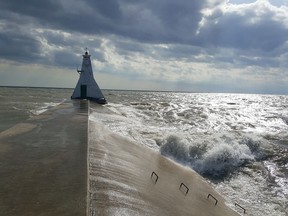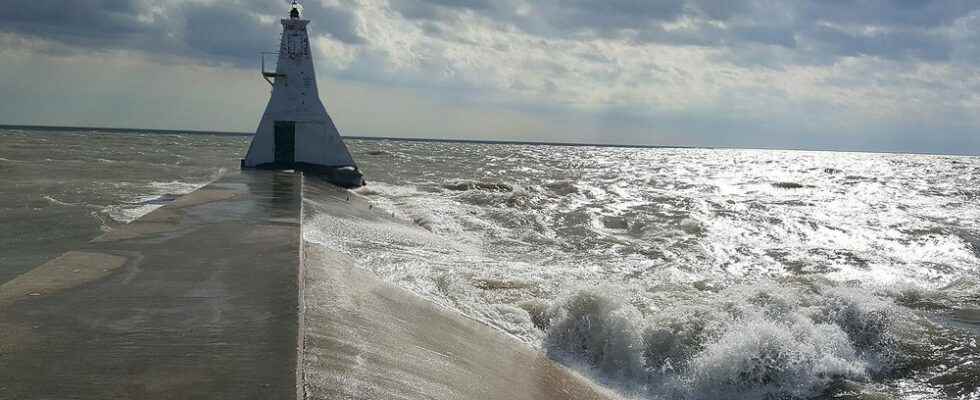Water levels on lakes Erie and St. Clair are down from previous years, but still “well above average,” say conservation authority officials.

Water levels on lakes Erie and St. Clair are down from previous years but still “well above average,” conservation authority officials say.
Average daily water levels on Lake Erie at the beginning of July were around 174.63 meters, the Lower Thames Valley Conservation Authority stated. This is down about 24 centimeters from last year’s peak daily average water level record set on July 21.
The all-time record high monthly average for July was 175.13 m, set in 2019. Levels at the beginning of this month were still 28 cm above what would be considered normal for the month of July.
“Forecasts suggest that water levels have peaked for the year and are now beginning their seasonal drop in water levels,” officials said. “Forecasts suggest water levels could drop around eight centimeters by the beginning of August.”
Average daily levels on Lake St. Clair at the beginning of this month were around 175.53 m. This is down approximately 28 cm from last year’s peak daily average water level record set on July 17.
The all-time record high monthly average for July was 176.04 m, set in 2019. Levels at the beginning of July were 31 cm above what would be considered normal for the month.
Forecasts suggest that levels are at their seasonal peak and will also begin dropping over the next month. They could drop by around five centimeters by the beginning of August.
Current levels on the lakes are still around 30 cm above average for this time of the year.
“Water levels on both Lake Erie and Lake St. Clair have fallen back down below July water levels seen from 2017 to 2021,” officials added.
With lower water levels, the risk of shoreline flooding has decreased. Along the Lake St. Clair shoreline in the Lower Thames Valley region, it’s expected that sustained gale force winds of more than 60 kilometers per hour would now be needed to cause flooding.
Along most of the Lake Erie shoreline, conditions have also improved. Some areas are also now looking at wind speeds closer to gale force before flooding would occur.
“However, conditions have not improved much for Erie Shore Drive,” officials said. “There are still areas along Erie Shore Drive where flooding seems to begin at around 35 km/h from a southerly – southwest through southeast – direction.”
